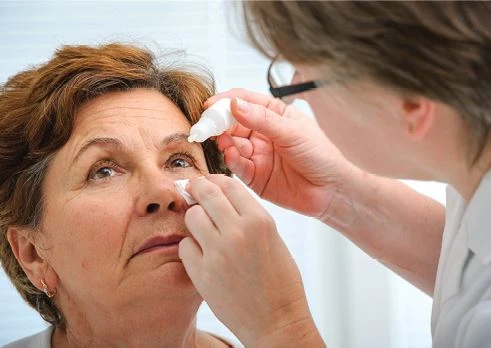And There Wasn't A Dry Eye in the House
personalEYES | 12 Sep 2019

More than 2 million Australians suffer from dry eye syndrome, an umbrella term for a condition that makes the eyes feel scratchy, blurry, tired or irritable. Dry eyes can affect the quality of your life, making it uncomfortable to read, watch television or work on the computer.
Dean Powrie, the CEO and director of personalEyes, says dry eye syndrome is one of the most common problems among patients who come to his clinics.
Powrie says that while many people experience dry eye, they may not know what causes it.
“People might use lubricating drops to help, but they haven’t been told why they have dry eye or what conditions have caused it,” he says.
“If you don’t diagnose what type of dry eye you have then you can’t treat the underlying problem.”
A number of factors can lead to dry eye, which occurs when we do not produce enough tears — or our tears lack the right nutrients — to effectively moisturise the surface of the eye, known as the cornea.
“Tears are a huge part of your ability to see properly,” says Powrie. “Even the quality of your tears is very important.”
Dry eyes can be the result of ageing, when the body begins to reduce its production of tears, or in certain environmental conditions – from windy winter days to air-conditioned offices. Medications, such as antihistamines or oral contraceptives, or existing health conditions, such as diabetes and allergies, can also lead to dry eye.
Women are also more likely to experience problems with tear production due to hormonal shifts during menopause or the consistent use of makeup products that irritate their eyes.
Powrie also believes that many aspects of modern life contribute to a growing prevalence of dry eye disease. For example, a 2016 BMC Ophthalmology report found that smartphone use was a risk factor for dry eye in young children.
“Our lives revolve around looking at screens,” Powrie says. “Everyone is on their computers all day or looking at their phones. They’re not blinking, they’re not changing their focus, their corneas get irritated and dry.”
Poor nutrition and excess pollution may also play a role.
Powrie says personalEyes clinics offer a number of diagnostic dry eye assessments to help patients discover the solutions that work best for them. Though treatments can range from lubricants – often a first line of defense – to medication, specialists can recommend a variety of treatment options.
The LipiFlow system, for example, uses a device to heat and massage blocked meibomian glands, a common cause of dry eye syndrome. Blefex is a mechanism that doctors can use to clean buildup around the eyelids. Doctors can also recommend supplements, such as Omega 3 fatty acids, or even special glasses that promote the flow of moisture around the eye area.
“The main message is that you don’t have to suffer from dry eye if drops aren’t working for you”, says Powrie. “Seeing a specialist who can find out what’s causing it can make a huge difference.”
Visit www.personaleyes.com.au/dryeyes
Source: Sydney Morning Herald (7 July 2017)



